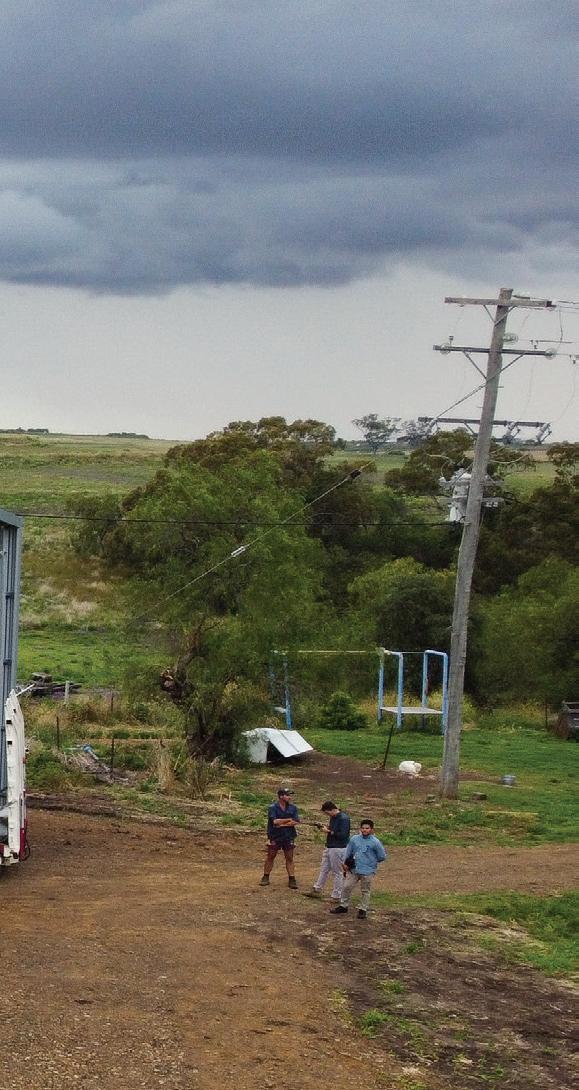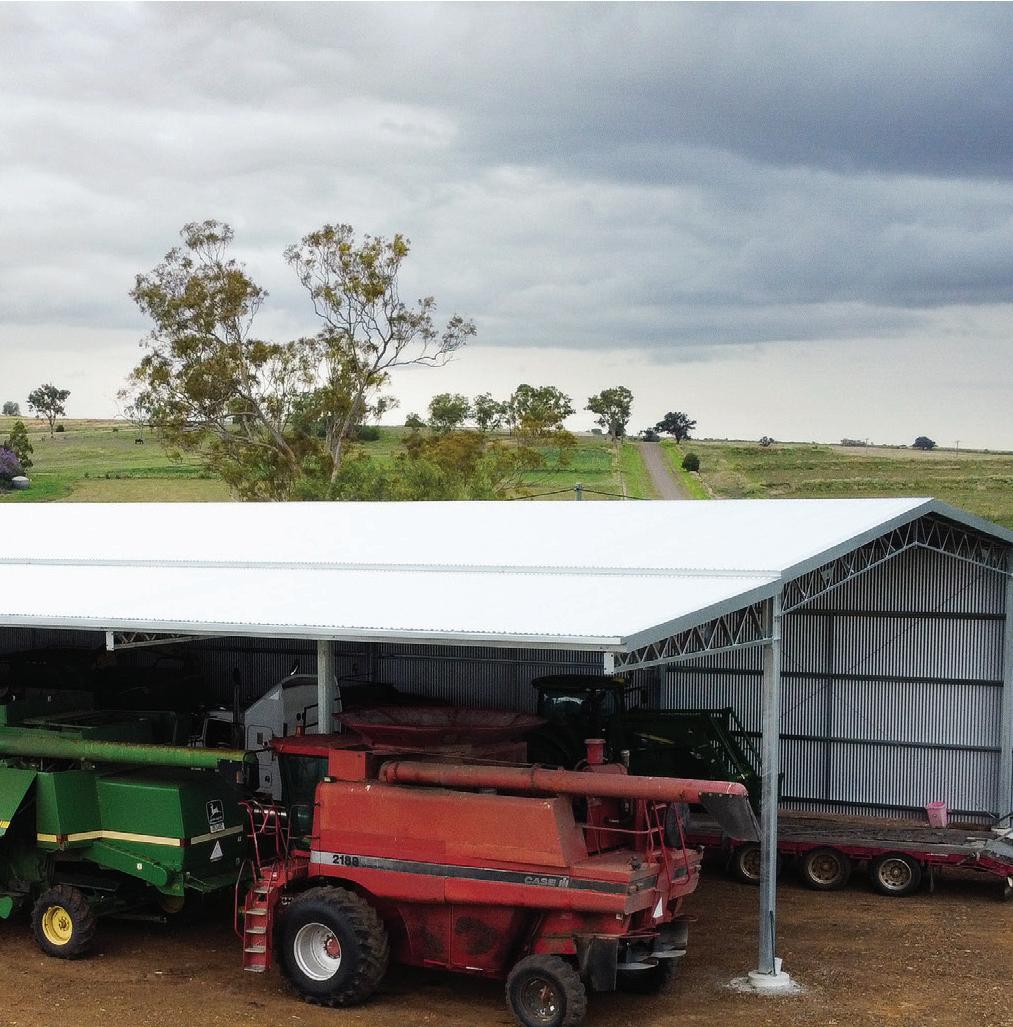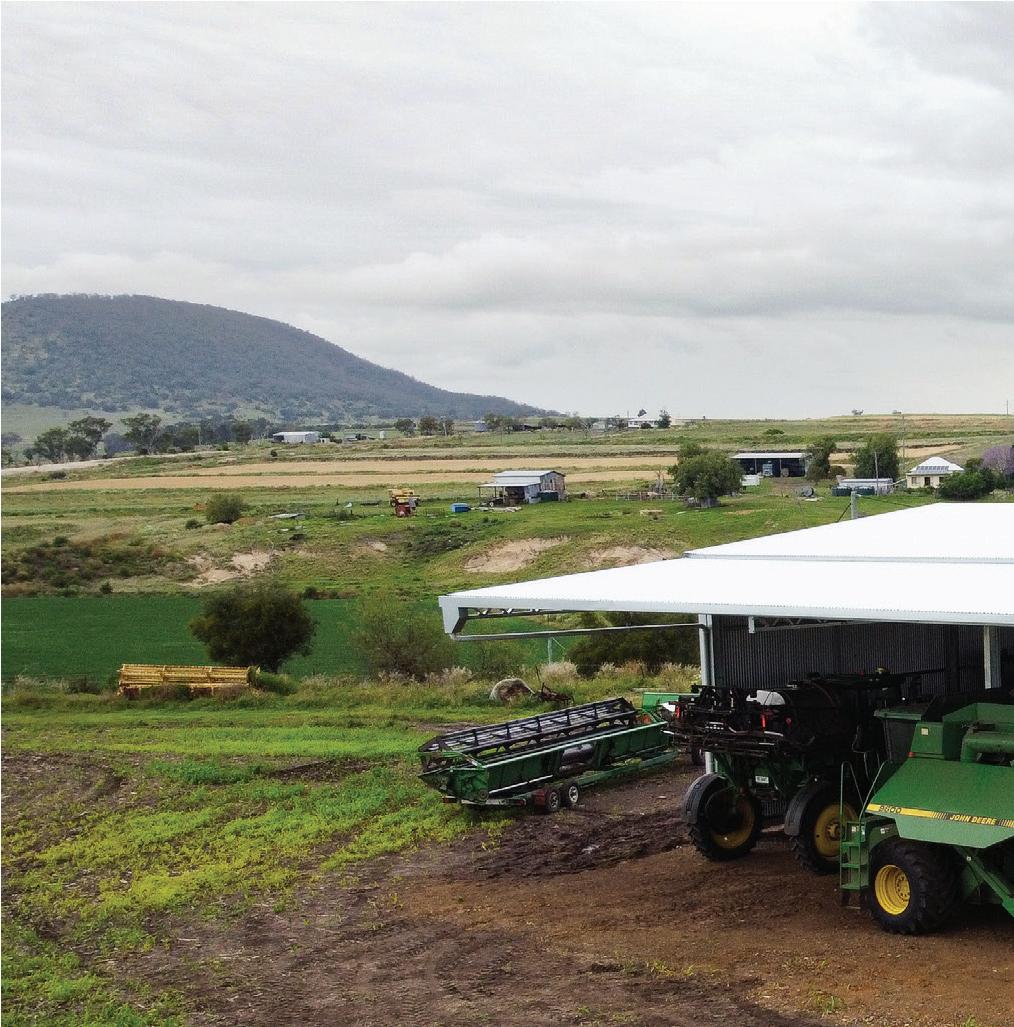
14 minute read
THE MOIRS’ JOURNEY ..........pages
The outlook from Ken and Kim Moir’s home at Chatsworth. 256021 A Taste of the Highlands: The view to the west from Ken and Kim Moir’s property at Chatsworth. 256021
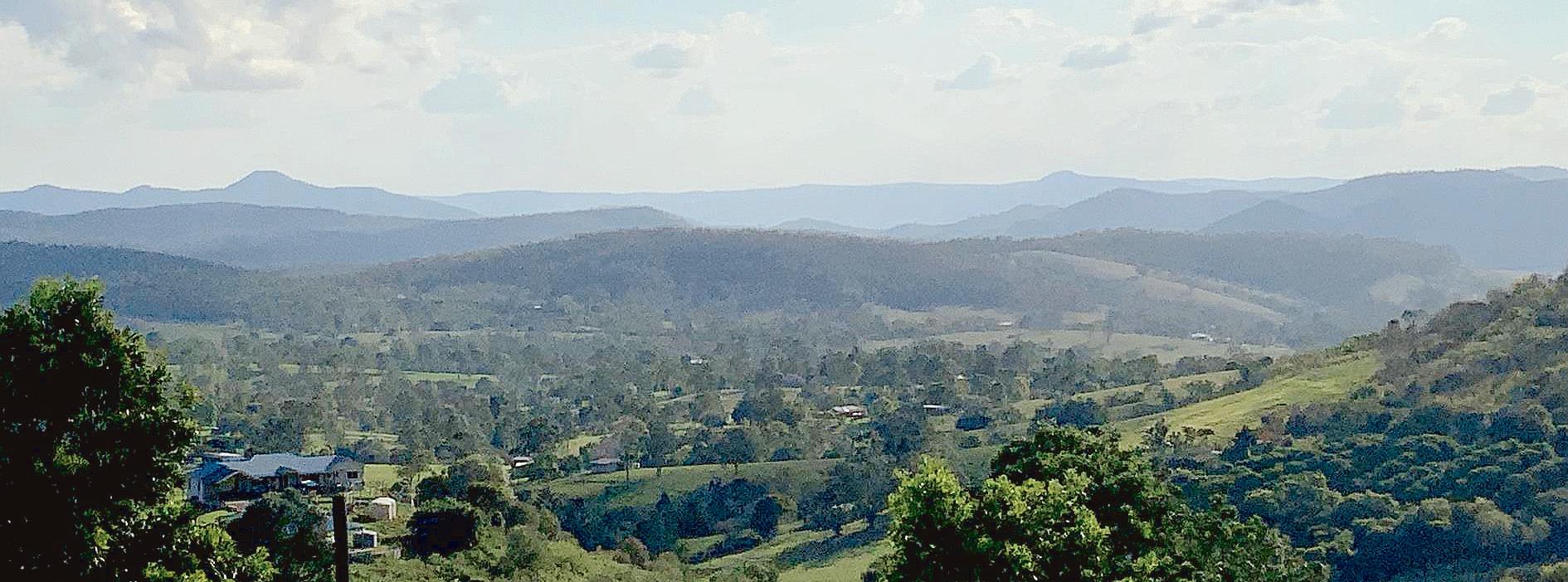
From milk cart horses in Scotland to mustering in the Australian bush, Ken and Kim Moir have travelled together on life’s journey, as ERLE LEVEY discovers. Putting pieces together
He grew up with horses. She worked in welfare.
Through time, they both realised they had different talents but were able to use them to help each other.
He with horses that had been harshly cared for; she with children from broken homes.
It was like putting the pieces of a jigsaw together again.
By placing horses and young people together Ken and Kim Moir have been able to make some remarkable breakthroughs.
Most significantly with the turn-around in the lives of those impacted.
Yet in doing so it unearthed talents in Ken and Kim they had learned earlier in life - he became known for his ability to calm horses.
Horse whisperer if you like. Yet he doesn’t go by that.
Kim has become an integral part of endurance riding administration, not just in the Gympie region but for Queensland and Australia.
I am speaking with them over a cup of tea - leaf tea, from a pot - a glass of filtered rain water and biscuits at their Chatsworth property.
The outlook reminds me of the Scottish Highlands, especially the view to the south west.
I suspect that’s why they chose the 100 acres initially. It reminded them of where they were both born.
I knew Ken rode in endurance events but something played out earlier this year that sat me back.
It was at Stirlings Crossing Equestrian Centre at Imbil and riders in the shorter events were breaking camp, getting their horses into trailers, trucks or floats.
One rider was really having an issue getting the horse up the ramp and into the float.
It seemed the harder she tried the more skittish the horse became.
We were watching from the deck of the ride base and Ken was getting concerned.
That’s when he walked over. He had seen enough.
It was time to put his knowledge of how to naturally handle horses to good use.
For perhaps 20 minutes he stood with the horse, twirling rope much like a stockman would a lasso.
He would lead the horse forward a step, then let it retreat.
Two steps forward, one step back.
He would even get the horse to place its two front feet in the float ... and then let it back away again.
Then the process would start all over.
When the horse had complete trust in Ken, and that he wasn’t going to force the process, it walked straight in.
It was a magical experience to watch.
Yet to Ken, it was simply what you do - every day.
It’s a matter of understanding the horse, and gaining its trust.
They say when you breathe the same air as a horse - face to face - it’s similar. Gaining trust in each other.
That’s when Kim tells me about one of the first times Ken tried his natural approach with horses.
Except he was riding the horse up the ramp into the float.
Kim half expected the horse to rear up and take Ken’s head off - it was that dangerous.
Yet it didn’t.
That was the starting point. Trust. Just like with children.
“As you become more aware, you get a bigger understanding,’’ Ken said.
“Horse behaviour comes not just from what they have experienced in life but what they have built into them - a sense of what might happen.’’
Sitting with Ken and Kim you quickly sense both have known what it is like to struggle in life.
The words of the Crosby, Stills and Nash song Helplessly Hoping could not be more appropriate.
One person, two alone, three together, for each other.
Both were born in the north east of Scotland, near Aberdeen.
Ken’s father was a farmer. Kim’s was a milkman.
“I can remember the clip-clop of the horses,’’ she said. “He would milk the cows and then deliver the milk.
“When we came to Australia the horses were used for mustering.
“It was one of the many changes we had to get used to.’’
Sitting with them, you soon appreciate Ken and Kim’s acknowledgement of the poignant moments in their life ... the pivotal milestones that changed them.
And he seems very aware of the sacrifices she’s made over the years, especially coming to a new life on the other side of the world.
And while there are similarities, Australia even in the 1980s was a foreign country. So remote and disconnected from family and friends.
Instead of being caught in snow storms on the way to work there was the intense heat of the dry grazing country, first in New South Wales and then in Queensland.
They had met at school in a Scottish village and both went to university in Aberdeen.
Ken studied geography and geology. Kim social welfare.
He actually spent more time on the neighbouring golf course and his love of geography inspired thoughts of what happens around the world.
“It was the same with geology,’’ he said. “I was really interested in why things happened. Why did Gympie start?
“History and geography. I thought I may have been a town planner … it’s interesting how things develop.’’
Ken started riding when he was four. There were four boys in the family - Alex, Eddy, Ken then Andrew.
His father always had horses that he was buying and selling.
“We were all riding ponies, especially in the summer holidays.
“We would take them to the shows and race them - there was prize money and bookies.
“Our father would go away with his truck and come back with horses.
“He would come back from Wales with welsh mares, so we started breeding our own ponies.
“They were unbeatable due to their speed and stamina. We were hooked.
“We watched jockeys such as Lester Piggott, Scobie Breasley, and George Moore.
“We practised on the backs of lounge chairs and would get up on our knees to get past the finish line.
“By the time we were five or six, we were saddled up ready to go.’’
That was the start of the horse whisperer in Ken.
The horses got so fit towards the end of the season they couldn’t hold them.
“We would ride them bareback to the beach, over the sand dunes and let them roll in the dunes.
“That’s how we trained them. It was about letting the horses have fun.’’
When Kim first went to university it was to do maths and become an accountant.
Yet she found people and their problems more interesting so switched to sociology and psychology, and graduated in social work.
“When I started it was a new profession,’’ she said.
“We covered a wide area - aged care, child protection, probation, mental health.
“They all came together under this banner.
“It was interesting that the world was a big place then.
“The drive to work was significant - 15 miles. Driving in the snow was normal.
“It’s interesting that the experiences you had were thought to be normal.’’
Kim was eventually able to complete her Bachelor of Accountancy ... by long distance education here in Australia.
After Ken graduated he returned to the farm as part of the family business.
Yet it was the Margaret Thatcher years of government and the financial recovery meant interest rates went from six to 22 percent.
Retrospective tax laws on capital gains as well as capital transfer saw the business severely compromised.
So he decided they should make a big move and come to Australia.
From running four farms to carrying a couple of suit cases, they arrived at Melbourne first then he secured a role on a large property at Trangi, west of Dubbo.
Ken was overseer at Old Bundemar, a famous merino and hereford stud dating back to 1883.
It comprised 20,000 acres divided off about 80,000 acres and was still 15-20km from town.
“I thought I’d gone to the end of Earth,’’ Kim said.
“Still, we’d made the decision so may as well make it a five-year plan.
“The people were very friendly, welcoming.
“We were there in January 1982 and it was 46 degrees.
“It was a country of extremes. I was never as cold as I was there.
“The houses were designed for hot weather, not the cold of winter.’’ In 1985 they moved to Thangool, south of Biloela in Central Queensland.
They started share farming before buying 160 acres and the long road back to the family tradition.
By 1987 they had two daughters and Kim started work again in 1992, with the social services section of the Anglican Church.
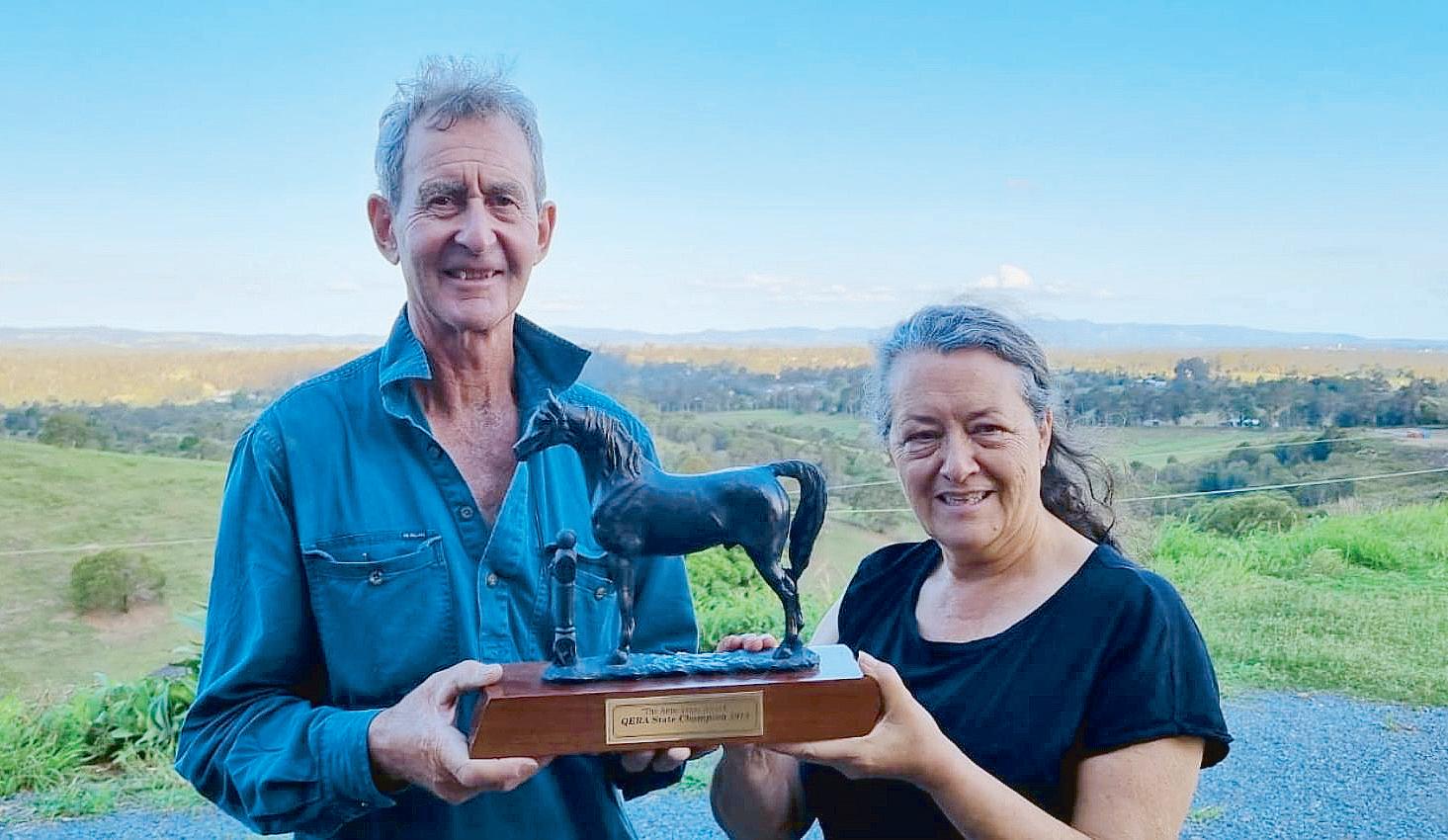
Ken and Kim Moir at their Chatsworth property with the Anne Jones Award for winning the 2013 QERA State Championship. 256021
We would ride them bareback to the beach, over the sand dunes and let them roll in the dunes. That’s how we trained them. It was about letting the horses have fun.’’
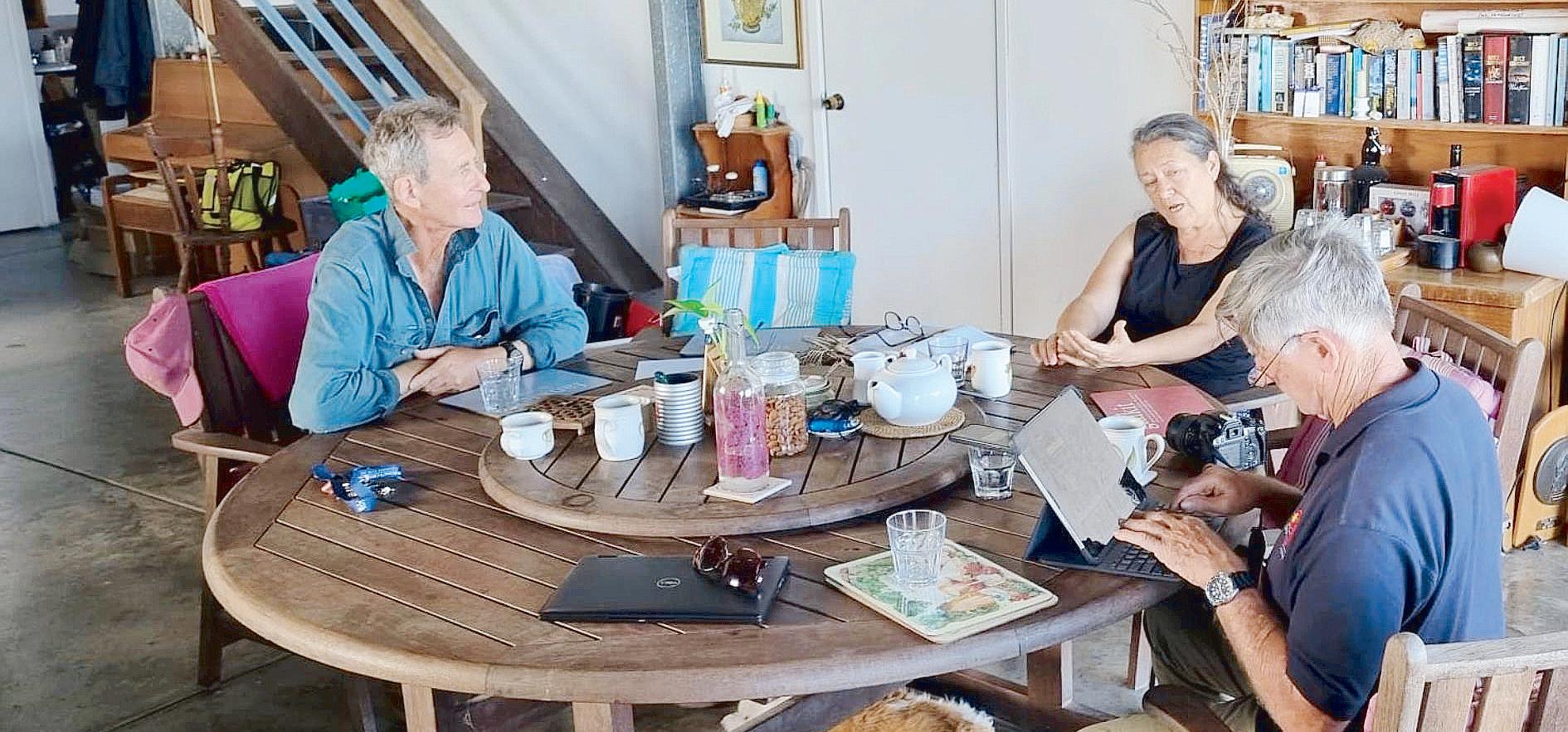
Round-table discussion. Ken and Kim Moir with On The Land writer Erle Levey at their Chatsworth property. 256021
It was a new job as a community resource worker and she had the opportunity to find out what was needed, then put the services in place.
Her work was mainly foster care and residential care.
“I was filled with anxiety yet it turned out to be fantastic.
“From starting with a budget of $40,000, when I left in 2005 it was $5m and provided a lot of services.’’
Her career demonstrated a drive to improve systems and processes which she’s applied to the endurance riding after experiencing it first hand as a spectator.
Then there was her deep understanding of the psychology behind both children and horses’ behaviour.
For Ken, it’s all about horses and people’s relationships with them.
Like Kim with children, he had a desire to improve the process. The process of managing horses’ behaviour.
When Ken found that what he did with the horses worked, he made a conscious choice to change his way of engaging with them.
He was brought up in the old-fashioned way of breaking them, just as his father had.
Yet he has been able to change his methodology from what he was taught when he was young.
“It was a different attitude then,’’ he said. “A make and do situation.
“Now it’s cause and allow.
“Causing it to do something … not forcing it, allowing it.
“It’s about how horses do things willingly rather than with a bad taste.
“They can run faster and jump higher if they have the will and desire rather than making them.’’
What Ken was doing with horses made sense when dealing with young people.
Kim found it was a matter of coping with what’s happening to them emotionally.
Building a relationship, and building trust in what they were being asked to do.
“It’s like getting a horse to walk into a big dark, square box,’’ Kim said.
“The horse seeks safety, comfort.
“It’s a matter of using psychology and understanding rather than force.’’
That’s when they tell me you have to be able to use different approaches for different horses.
Horse-analities. Like personalities.
To discover whether they are flighty or not, extroverted or introverted.
“You can learn this by interpreting what they are,’’ Ken said. “But you still have to practise it.
“When you look at children, if they are badly behaved they are obviously feeling unsafe.
“You need to look at the reason of their behaviour rather than judging them.
“You begin to educate them that there is a better way of expressing that feeling.
“We have to engage with them in a way to make it a safe place for them.’’
When Ken bought the 100 acres at Gympie in 2005 he was already getting into endurance riding.
The property is at Castleton Rise, named after Ken’s grandparent’s farm Milton of Castleton in Scotland.
This was going to be horse central as their daughters Tanya and Katy were both in Brisbane, and Kim was working with Anglicare.
Ken had been doing mustering and camp drafting at Thangool so his natural way of treating horses was paying off.
He picked up some young horses that others couldn’t handle. Problem horses.
Yet at Chatsworth they are now breeding their own, including a number of Arabians.
“We look for those that have done well, that their parents have done well,’’ Ken said.
“It’s a genetic thing.’’
Some have since been sold to stables overseas, while those they kept have done well - including some state champions.
That brings us to endurance riding - is it a sport or a past time?
The answer is not just either, but three. It’s a business as well.
There is the breeding, training and care of the horses as well as the ability of horse and rider to combine as a team.
So, should endurance riding be considered for the 2032 Brisbane Olympics?
“I don’t think Ken or I have had any thoughts on this,’’ Kim said, “but I know that others have been thinking about it.
“It would seem a great opportunity to work towards this in 2032.’’
Kim was roped into endurance in 2006-7, not as a rider but in administration.
It was not just a matter of having a good understanding of maths but a strong sense of community, and helping where she could with the care of horses and young people.
The first endurance event she attended was Imbil - what was then the Faraway Club.
“When someone you know is participating,’’ she said “... it’s not a great spectator sport.
“A couple of hours sitting there, waiting for your rider.
“So I got involved by just helping out at Imbil and Widgee.
“I finished work in 2015, and had basically retired, so in 2016 it was suggested I join the Queensland Endurance Riders Association (QERA) committee.
“Then I was nominated as representative on the Australian committee, AERA.’’
Kim has since become secretary of the national body, is on the state committee, president of Stirlings Crossing Endurance Club, treasurer for Widgee Endurance Riders and helps with a number of other rides.
“It’s hard not doing anything,’’ she said.
“We try and create a good environment for people to ride.
“No matter how much planning goes into an event there will always be something.’’
That can come down to the electronic recording system failing, resulting in manual recording of times for competitors with pen and paper.
Otherwise, a kangaroo on the trail or a fallen tree branch can spook the horses, causing the riders to fall.
The 2019 Tom Quilty Gold Cup at Imbil was all about risk management, with 300 horses going out the gate at midnight at the start of the event.
“If you can accept that,’’ Kim said, “you can deal with anything else that could possibly go wrong.’’
Ken won the Anne Jones award at the 2013 Queensland State Championships after taking out the middleweight division.
Not only that, a 12-year-old James Coop, who was living with the Moir’s, won the junior division.
“That was a great reward to see James be successful,’’ Kim said.
“He was living with us for some years - as part of our family.
“He found success in a sport not otherwise available to him.
“That’s the beauty of endurance, it’s a sport that encapsulates anyone from five to 75.
“You can have the whole family out there … children, parents, grandparents.
“It’s one of those things in which we have made it as safe as we can responsibly make it - a standard of care.
“From an administrative point of view, to see them progress from 40km to 80km rides is very rewarding.
“It can be harder for some riders to take that step … the horses will do what you want.
“I see young riders at events who may not have their mums and dads for support.
“Being with a horse helps them.
“A horse will tell you absolutely what it thinks of you.
“If you are not honest, it will tell you.’’
In a journey that has taken Ken and Kim to the other side of the world, they have certainly been there for each other ... and so many others along the way.
SHEDS
RURAL SHED SOLUTIONS
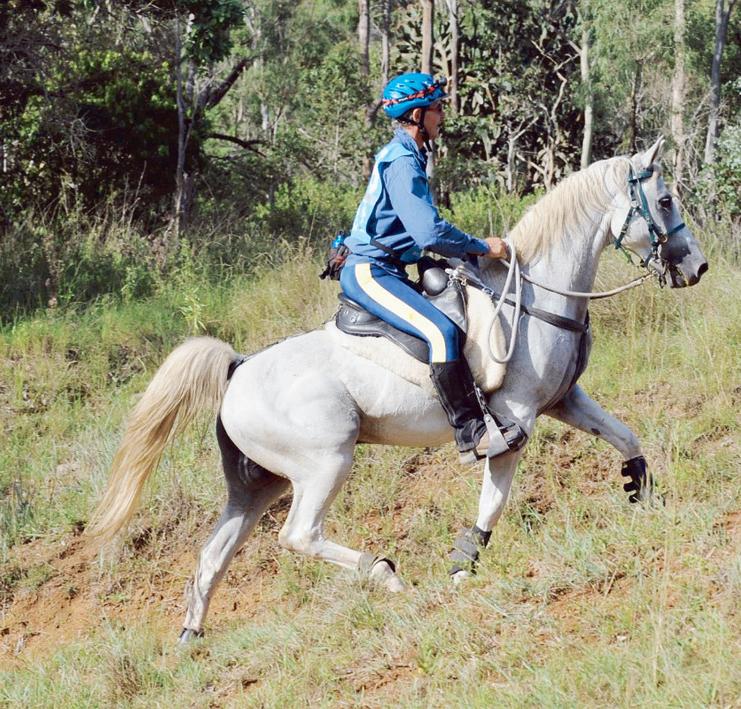
Ken Moir riding Shian. 256021 Pictures: SUE CROCKETT
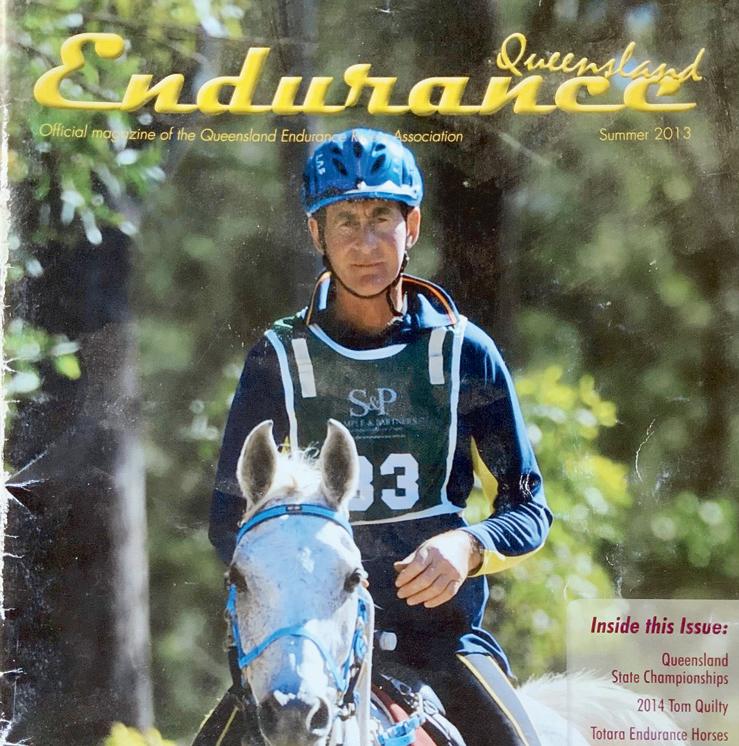
The cover story of the 2013 Endurance magazine when Ken Moir won the Queensland State Championship. 256021 Ken and Kim Moir at their Chatsworth property.
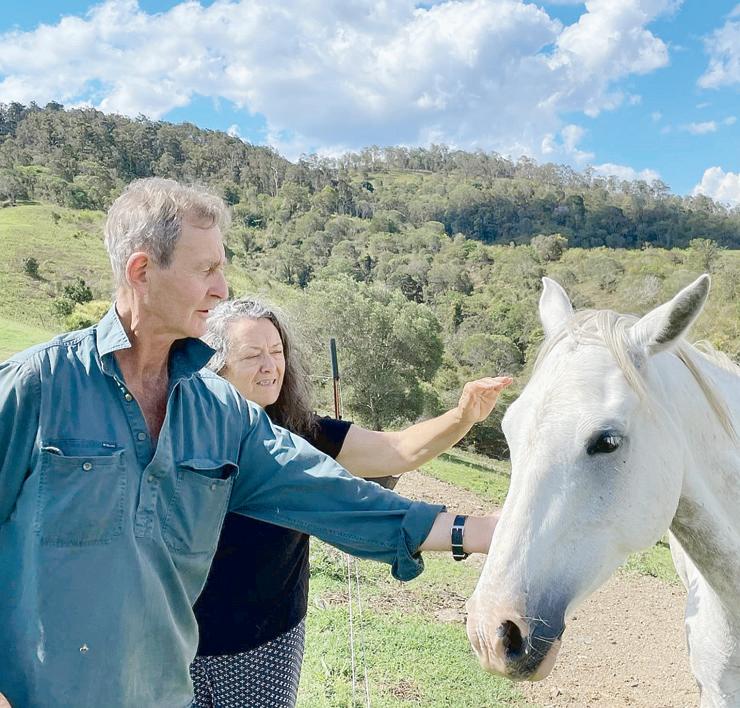
256021
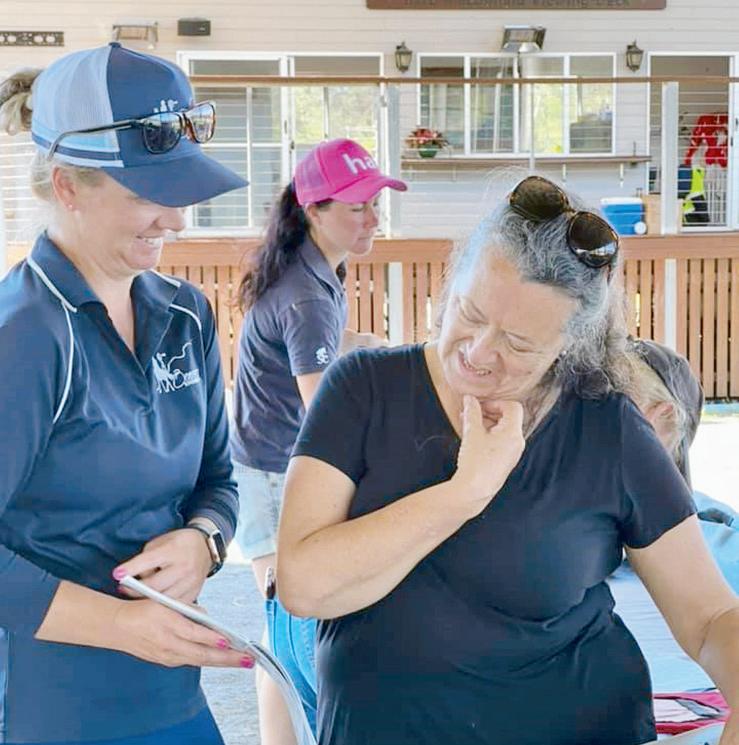
Kim Moir, right, checks a log book for a rider at the recent Stirling’s Crossing equestrian event at Imbil. 256021
